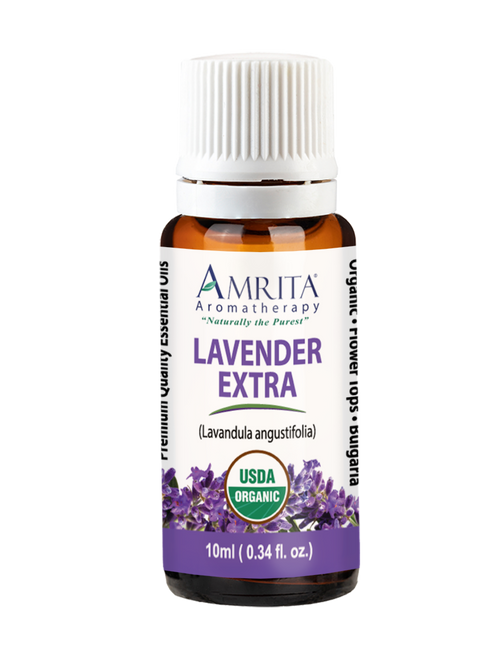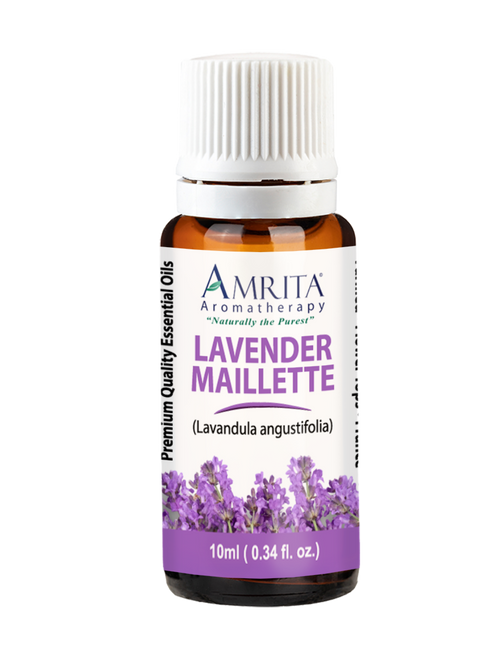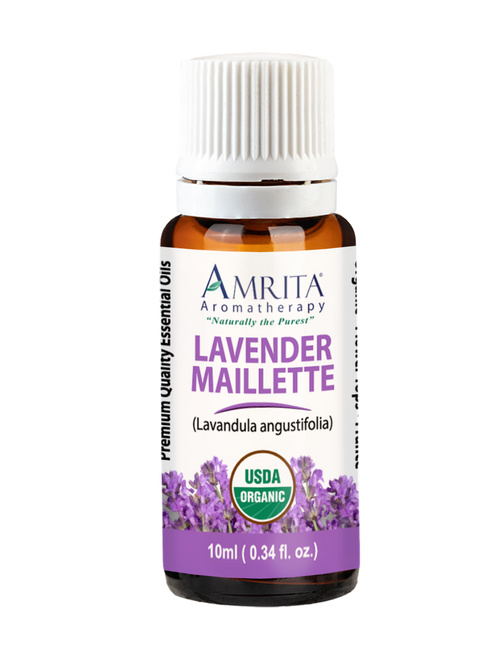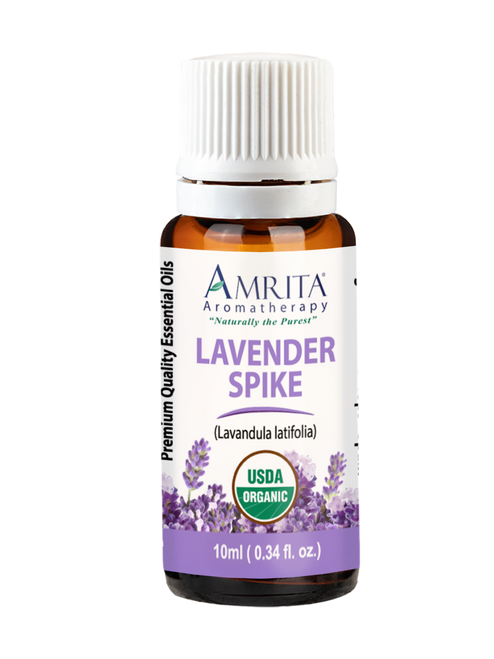-
Useful Amrita Products for Asthma:
Which essential oils are effective for asthma attacks?
For the acute care needed to get any asthma attack under control, traditionally people apply Roman Chamomile Essential Oil.* Dr. Streicher suggests making a blend of 3-5% dilution in a quickly penetrating carrier oil like Jojoba or Hazelnut (3-5% dilution means 15-25 drops of essential oil to a tablespoon of base oil); then apply this blend on the chest and back.*
For long term management, traditionally people diffuse Allergy Ease Synergy.* You may like to add some more Ammi Visnaga to it, as this is the most powerful anti-asthma essential oil.* But be careful not to overdo this by leaving the nebulizer running.* After regular use, this may often avoid an attack from happening.*
Others have also found that diffusing a mixture of Ammi Visnaga and Eucalyptus Radiata in a 1:4 ratio (1 part or 1-2 drops of Ammi Visnaga with 4 parts or 4-8 drops of Eucalyptus Radiata) and using it for 20 minutes twice a day also may help to temporarily relieve asthma symptoms.* Some have found that this combination of oils clears their congestion and relaxes their breathing.* Ammi visnaga is expensive, but when you combine it with Eucalyptus Radiata, it's more affordable, and the two oils work together very well.
This video is by the founder of Amrita Aromatherapy and master aromatherapist Christoph Streicher, Ph.D.
Learn more about aromatherapy or see our how to use essential oil videos.
Others have found that strengthening the respiratory system can help combat against symptoms of asthmatic attacks.* Amrita’s experts would highly recommend Respiratory Health Tri-Essence® Power Blend and Breathe Easy Synergy Blend.
- Respiratory Health Tri-Essence Power Blend — This Tri-Essence Power Blend is the product you need when you are serious about improving your health in this vital function of physiology, the respiration.* When the respiratory system is impaired, this can make it extremely difficult to breathe properly.* Respiratory Health is a solution, whether your asthmatic symptoms are acute or chronic.* It can help you recover faster from being ill; and it can provide support for your sinuses, lungs, throat and entire respiratory system, improving the quality of your breathing and your life.*
- Breathe Easy Synergy Blend — This synergy blend uses Citronella, Sweet Eucalyptus, and Siberian Fir to reduce respiratory blockages and strengthening your respiratory system, you can enjoy a wide range of health benefits such as more clarity, energy, and lightness of being.* Breathe Easy can help you enhance your respiratory functions; thus, it can enhance your life.*
-
Useful Single Note Essential Oils for Asthma:
The following essential oils have traditionally been used for asthma:
- Ammi Visnaga — You can also dilute up to 2% of Ammi Visnaga in any carrier oil (10 drops per tablespoon) and apply directly for spasms, but if used in excess, it can be toxic. This precious oil is a must-have in any therapeutic collection due to its impressive effectiveness in treating asthma and allergies when steam-inhaled.* Ammi Visnaga is an antihistamine, which means it blocks the allergic response.* It also can be used to control allergic reactions, because it prevents the release of histamines.*
- Note: Because Ammi Visnaga is very photosensitive, massage and aromatic bath applications are not recommended.* Dr. Streicher suggests using Ammi Visnaga in a nebulizer, diffuser, or inhaler.
- Blue Moroccan Chamomile — This variety of Chamomile has powerful anti-inflammatory and antihistamine properties due to its high content of chamazulene.* Blue Moroccan Chamomile has antihistamine and antiallergenic properties can help the user cope with a broad range of respiratory issues such as congestion or cough.* Even acute asthma attacks can be mitigated, as well as many other allergic reactions.*
- Note: Use only in small quantities, and never with children or during pregnancy.* Blue Moroccan Chamomile will clog in a nebulizing diffuser; thus, you will have to use another kind of diffuser or use a blend that has Blue Moroccan Chamomile in it like Allergy Ease Synergy Blend.
- Roman Chamomile — Roman Chamomile is one of the most universally relied-upon herbs for calming both mind and body.* Although it is extremely gentle, it works as well as prescription medicine for bringing spasms, cramping, and convulsions to a halt.* The most severe asthma attacks can be brought under control in minutes by using Roman Chamomile, just by virtue of the bronchial spasms being relieved.*
- Note: Roman Chamomile Essential Oil is one of the mildest oils available in aromatherapy. It is safe to use during pregnancy and even with babies (please use it sparingly).* However, it has caused contact dermatitis in a small number of individuals.* If using on very sensitive skin, try it properly diluted on a small spot first.* Dr. Streicher suggests making a blend of 3-5% dilution in a quickly penetrating carrier oil like Jojoba or Hazelnut (3-5% dilution means 15-25 drops of essential oil to a tablespoon of base oil); then apply this blend on the chest and back.*
- Eucalyptus Radiata — Eucalyptus Radiata perhaps shines brightest when demonstrating its therapeutic value for the respiratory system.* These include but are not limited to symptoms of asthma, bronchitis, congestion, cough, sinusitis, cold, flu, and sore throat.* It makes perfect sense that the familiar aromatic essence of Eucalyptus can be recognized in countless respiratory remedies marketed throughout the world, but be careful that the Eucalyptus you get is pure and not synthesized.*
- Note: Eucalyptus Radiata Essential Oil is non-irritant and non-sensitizing to the skin.* However, it can be poisonous if ingested, even in small amounts.* Not appropriate for use with babies and small children under four.* By inhaling its diffused essence or applying topically to the chest to subsequently breathe in a steady dose of its vapors, symptoms of many respiratory ailments can be tackled.*
- Hyssop Cineol 1.8 — Discover the sacred healing powers of Hyssop, a natural remedy with the wisdom of a grandmother. This essential oil is a potent healer for coughs, colds, flu, and respiratory issues like asthma.* Simply dilute up to 1-2% in your favorite carrier oil (5-10 drops per tablespoon) and apply to skin or diffuse for a calming effect.* Then, breathe in the healing aroma deeply for ultimate relaxation and wellness.*
- Note: Hyssop Cineol 1.8 Oil is a low-toxicity variety of Hyssop.* The safety precautions you may see for other Hyssop Oils do not apply; however, it is recommended to avoid all Hyssop Oils throughout pregnancy, labor, and breastfeeding.*
- Lavender — Renowned for its multifaceted support across various bodily systems, including the musculoskeletal, nervous, respiratory, and circulatory systems.* Its gentle yet effective properties, particularly when combined with massage lotion or oil, offer a calming and soothing sensation to muscle joints.* This soothing effect not only alleviates pain but also enhances the overall therapeutic experience for the individual.* Consequently, Lavender stands out as one of the most prevalent essential oils used in massage therapy today.
- Note: For maximum effectiveness and optimal results, diffusing the oil is the preferred method of use. Embrace Lavender essential oil and effortlessly overcome respiratory ailments!
- Spike Lavender — This type of lavender oil that is much better suited for use as an expectorant, to help clear mucus and phlegm, and for easing aches and pains.* Emotionally, Spike Lavender Essential Oil is more energizing and stimulating than is true Lavender Essential Oil.* It promotes concentration and focus more than does true Lavender Essential Oil.* Due to it’s high camphor content, Lavender Spike is perfect for massage as it warms and relaxes muscle tissue.*
- Note: Spike Lavender Essential Oil may be mildly neurotoxic based on camphor content.* Thus, please keep this essential oil away from children.* Dr. Streicher suggests diluting Spike Lavender in your favorite carrier oil and using it for targeted topical application on the chest.
- Palmarosa — The uniquely floral, yet grassy aroma of Palmarosa Essential Oil has long been recognized for its balanced cordiality, as well as for its abilities to calm the nervous system while simultaneously uplifting the spirit.* It is said that Palmarosa encourages free-flowing adaptability and a feeling of security.* Thus, it opens the physical body by opening the mind first.*
- Note: Palmarosa Essential Oil is non-toxic, non-irritant, and non-sensitizing when properly diluted.* With topical use it is recommended, however, to perform a patch test on a small area of skin before applying more liberally in order to ensure there is no sensitization.*
You may also find this blog post about asthma and children useful. For details on the other products mentioned in the video relating to bugs and so on, see essential oils for bugs and bites.
*These statements made on this page have not been evaluated by the U.S. Food and Drug Administration (FDA). They are not intended to diagnose, cure, or prevent any disease. If a condition persists, please contact your physician or healthcare provider. The information provided is not a substitute for a face-to-face consultation with a healthcare provider, and should not be construed as medical advice.
-
About the Condition:
What is asthma?
Asthma is derived from the Greek word for "panting." Asthma is a chronic inflammatory disease of the airways.* It is also called bronchial asthma or reactive airway disease. The symptoms reoccur and vary. They include wheezing, coughing, tightness of the chest, and shortness of breath.* Technically, these symptoms are described as reversible airflow obstruction and bronchospasm.* It is associated with inflammation of the bronchial tubes and an increased production of sticky secretions inside them.* The number of people contracting this disease is increasing with over 8% of the U.S. population suffers from asthma…and sadly, asthma attacks can be fatal.*
What causes asthma?
The exact cause is unknown. The triggers for this chronic inflammatory disease of the airways vary from person to person.* But when airways come into contact with this trigger, they become inflamed, narrow, and fill with mucus.*
There is some evidence for genetic influences and environmental factors.* Some other common triggers include dust mites, molds, pollen, pets, cockroaches, household irritants and secondhand tobacco smoke.* For some people, allergies play a role while for others exercise can induce an asthma attack.* See our page about essential oils and allergies for more details on this related condition.
*These statements made on this page have not been evaluated by the U.S. Food and Drug Administration (FDA). They are not intended to diagnose, cure, or prevent any disease. If a condition persists, please contact your physician or healthcare provider. The information provided is not a substitute for a face-to-face consultation with a healthcare provider, and should not be construed as medical advice.
-
Other Treatments for Asthma:
What are conventional medical treatments for asthma?
Treatment is geared toward preventing asthma attacks, and also dealing with the attacks when they happen.* They are generally steroids and anti-inflammatory drugs; this is not addressing the cause of the problem, but putting a “band-aid” over the underlying issues.*
The drugs for preventing asthma attacks are called "controller medications." They aim to reduce the inflammation of the airways so they are less likely to react to triggers.* The drugs for dealing with the attacks when they happen are called "quick-relief or rescue medications." They aim to relax the muscles around the airway.* These medications can be taken via inhalation, via a dry powder or a nebulizer (which changes it from a liquid to a mist), in a pill, or liquid form.* In severe asthmatic attack situations, they can also be given by injection.* Of course, as with all medications, there are side effects.*
What are alternative treatments for asthma?
There have been research studies on using acupuncture for asthma. But only some showed a reduction in medication use and improvements in symptoms and quality of life.* Some research found a trend toward improvement in symptoms with breathing techniques.*
There are Ayurvedic herbs and approaches to asthma. As with most diseases, Ayurveda considers asthma as being initially caused by poor digestion and poor elimination which leads to a buildup of toxins and impurities in lung and airway tissues.* It also considers that stress worsens the condition.* Of course, essential oils traditionally have also been used for asthma.* For more information, see the Useful Essential Oils tab.
*These statements made on this page have not been evaluated by the U.S. Food and Drug Administration (FDA). They are not intended to diagnose, cure, or prevent any disease. If a condition persists, please contact your physician or healthcare provider. The information provided is not a substitute for a face-to-face consultation with a healthcare provider, and should not be construed as medical advice.





